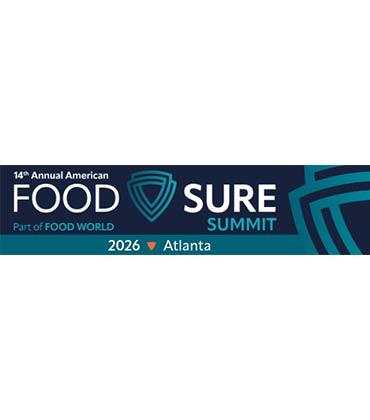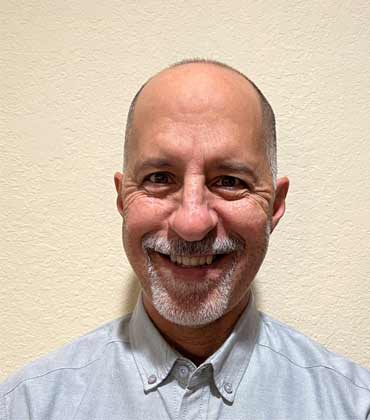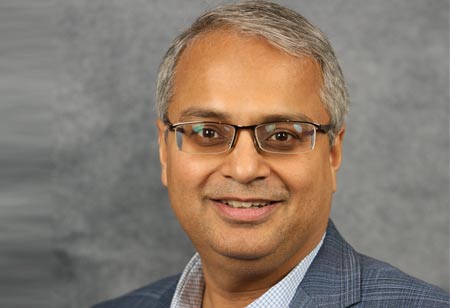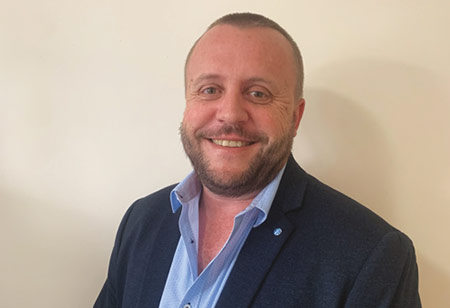THANK YOU FOR SUBSCRIBING
By Enrique Leon, AI Enterprise Architect, American Sugar Refining Inc
The Psychology of AI Credibility
By Michael Coley, Food Safety & Quality Manager, Symrise AG
Leading Food Safety Through Standards And Strategy
By Christina O’Keefe, Regional Head of Sustainability- North America, Kerry
Nurturing Tomorrow's Food Through Sustainable Leadership

Delivering Safe foods through Effective Sanitation
Christopher Smith, Corporate Sanitation Manager, Michael Foods

 Christopher Smith, Corporate Sanitation Manager, Michael Foods
Christopher Smith, Corporate Sanitation Manager, Michael FoodsChristopher Smith is a Corporate Sanitation Manager at Michael Foods. He has been managing the sanitation works for year, ensuring safe food for families leading for the team’s success. Smith shared his expert insights for the 2025 edition of Food and Beverage Tech Review. These insights offer valuable guidance and foresight based on his experience in the industry.
1. World of Food Production Sanitation
I can honestly say I was not drawn to the world of sanitation at all. In fact, I had never even thought about food production or sanitation, nor had I considered it as a career. I ended up in this field almost by accident. While I was studying computer engineering, I attended a military job fair at Kansas City in 2009, hoping to get an entry-level IT job. I was handing out my resume at every booth when a recruiter from a contract sanitation company struck up a conversation. By the end of it, I had agreed to a peer interview at one of their client facilities.
The interview was scheduled for 11:00 PM at a slaughtering facility. The heavy smell of blood hit me as soon as I arrived, and I seriously considered turning around. However, I had made a commitment, so I pressed on. Walking through the evisceration floor, dodging blood and parts, I expected to feel repelled, but I was strangely intrigued. I had never stepped foot in a food production plant and was fascinated by the scale and process.
The manager eventually took me on a tour of the floor, which, to my surprise, was spotless. In that moment, I knew I wanted to be part of this operation. I realized quickly how important sanitation is to the entire food industry. Early on, I realized that the performance of my team could have a direct impact on the lives of countless consumers. That sense of responsibility inspires me every day. Knowing that I am helping ensure safe food for families motivates my team and me to push for excellence. Everyone deserves to eat from a clean plate.
2. Path Towards Success
Keeping informed is critical. Whenever new regulatory requirements emerge, I first determine whether they influence my teams across the enterprise, then build an action plan to address them if needed. I stay updated through multiple sources: industry periodicals, direct conversations with our food safety and quality partners, and sometimes even the regulatory representatives at our plants.
One of the most effective practices has been our weekly meetings with executive management. These discussions often highlight changes well in advance, giving us a head start on implementation. Because multiple voices weigh in during these meetings, the action plans that come out of them are well rounded and more effective. It becomes a cross-functional exercise where food safety, sanitation, quality, and operations all contribute. That collaboration usually results in the smoothest path forward and the strongest outcomes.
3. Importance of Efficient Communication
I lean heavily on my military background when it comes to communication. I believe messages should be direct, clear, and as concise as possible for the audience receiving them. However, communication does not end with simply passing along information. I emphasize to my supervisors that follow-up is essential. If we do not confirm that a message was received and understood, then we own the results of any miscommunication.
“A strong leader needs to understand every element of the sanitation process, including chemistry, cleaning methods, documentation, regulatory requirements, and how the facility operates as a whole.”
This has become even more important as our workforce grows more diverse. Language and cultural differences mean clarity cannot be assumed, we have to ensure it. By building strong habits of follow-up and accountability, we create alignment across production, quality, sanitation, and maintenance. That alignment is what ensures everyone is moving toward the same food safety goals.
3. Standardized Sanitization Tools
As Michael Foods has grown through acquisitions, one of our biggest challenges has been inconsistency in how sanitation was documented. While the processes were often similar, each facility had its own approach to recordkeeping. Several years ago, we launched an initiative to standardize sanitation across the enterprise, both in process and in documentation.
Right now, facilities use a mix of tools: platforms like 3D TRASAR, Redzone, internally built Excel files, and more. These have been useful, but our long-term plan is to transition to a single enterprise-wide platform that will allow for consistency, easier access, and trend analysis across all plants. Having this level of visibility is critical to identifying opportunities, improving sanitation effectiveness, and ensuring compliance across the board.
5. Blended Approach to overcome challenges
One major challenge is the hybrid sanitation model many facilities now use. With production demands increasing, run times are extended, leaving less time for dedicated sanitation shifts. At the same time, training for production has become more emphasized than training for sanitation.
To address this, we have been working on ways to integrate sanitation training alongside production training. A big part of this effort ties back to our standardization campaign. We were fortunate to have a sanitation intern this year that helped us develop a flexible, modular training program. It can be tailored to each facility’s needs and incorporates multiple methods of learning while keeping the delivery compact and efficient. This blended approach allows us to train hybrid teams effectively without sacrificing production priorities.
6. Steps for Victory
My advice to future sanitation leaders is simple: start by learning the basics. A strong leader needs to understand every element of the sanitation process, including chemistry, cleaning methods, documentation, regulatory requirements, and how the facility operates as a whole. Early in my career, I made it a priority to perform the tasks myself. I knew I could not ask my team to meet a standard if I did not know how to meet it personally. That hands-on approach built trust, earned respect, and showed my team that I was willing to stand alongside them.
Equally important is compliance. Leaders must know company policies, understand regulatory expectations, and ensure their teams do too. I have found employees are far more motivated when they understand why a task matters. Finally, sanitation touches chemicals, safety, maintenance, and production. That cross-functional reach makes the role one of the most well rounded and impactful in any facility.
Read Also















